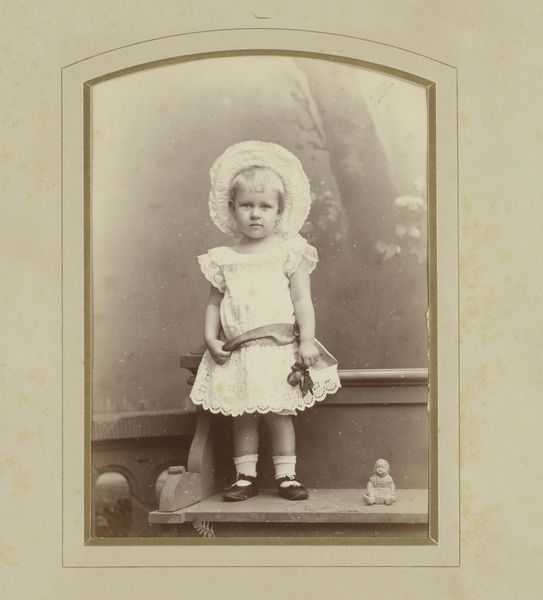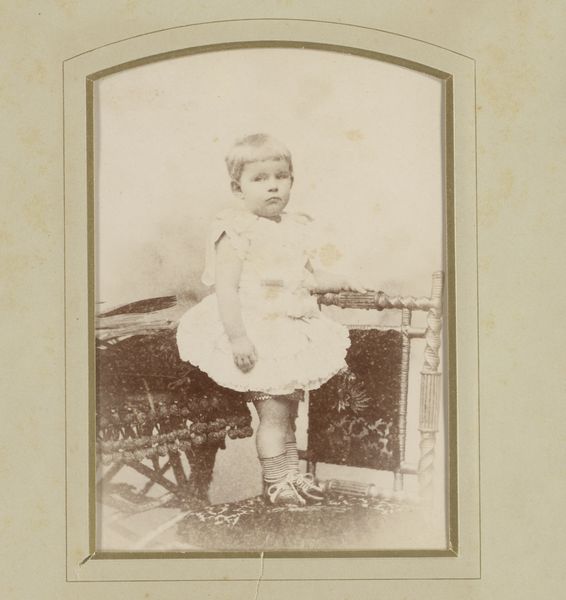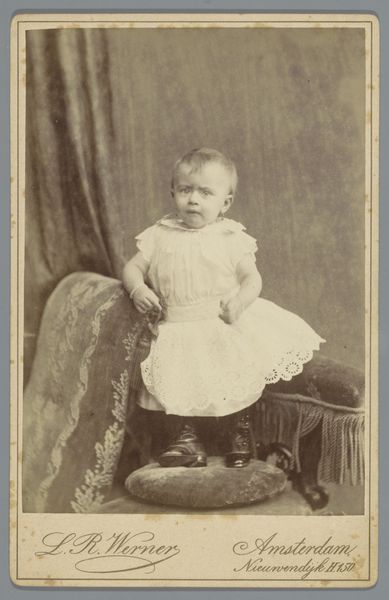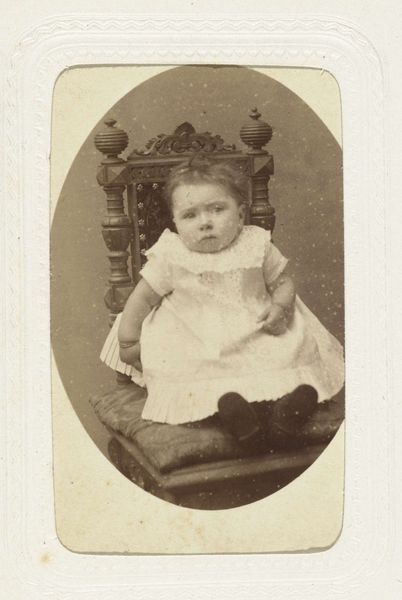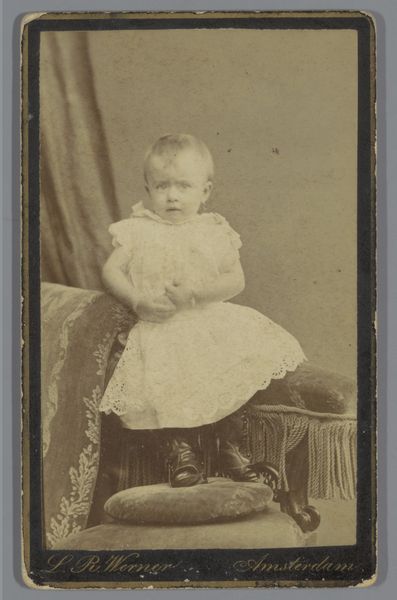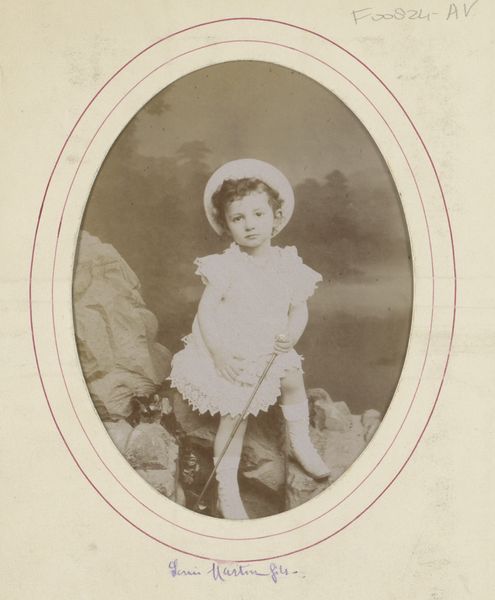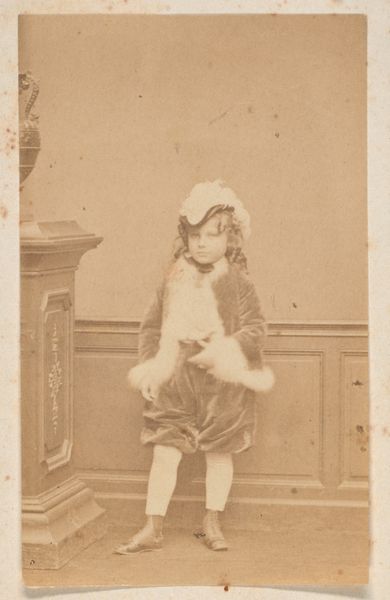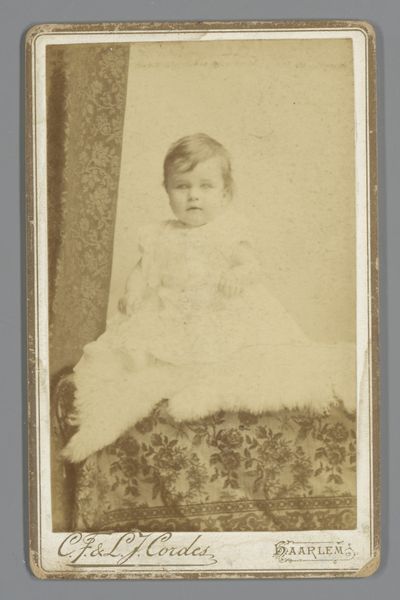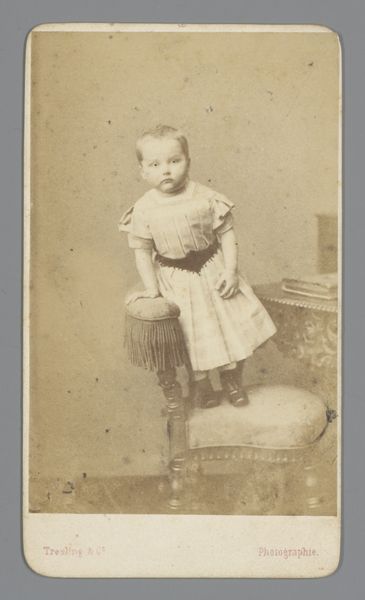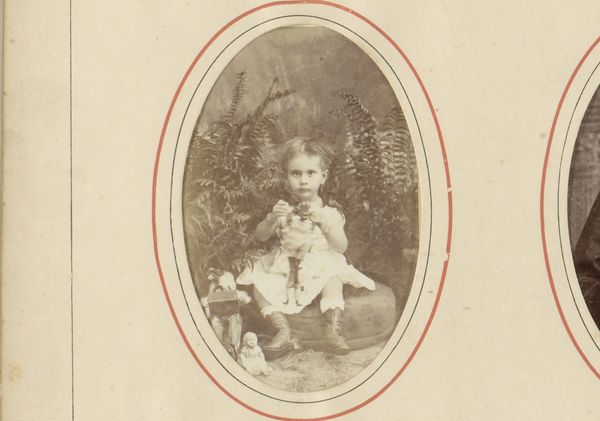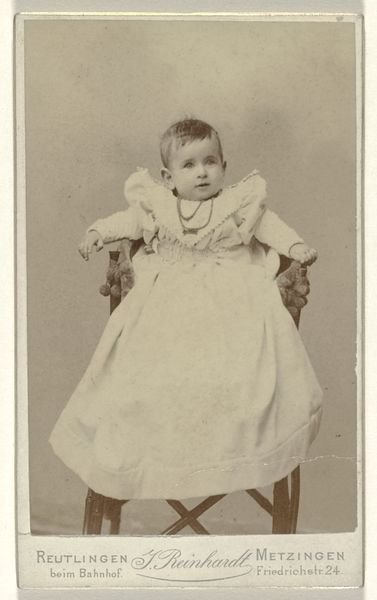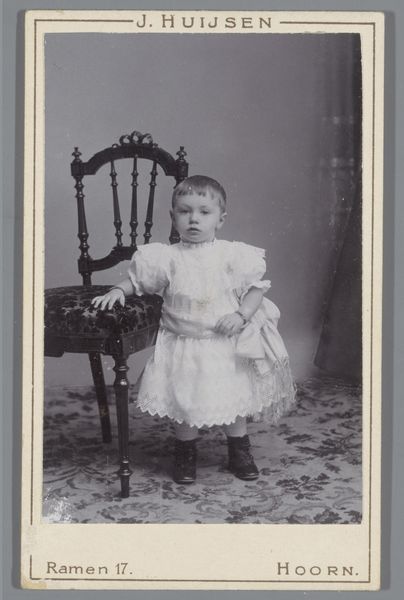
Dimensions: height 134 mm, width 95 mm
Copyright: Rijks Museum: Open Domain
Curator: What a striking image. This is a photograph titled "Portret van een meisje met een hoed," dating from somewhere between 1880 and 1920, likely using photographic processes common for portraits during that period. Editor: My initial feeling is one of tenderness mixed with formality. The monochromatic palette certainly evokes a specific period, but it’s the child’s wide, direct gaze, framed by that elaborate hat, that really pulls you in. It has a solemn weight to it. Curator: Absolutely. The careful posing, the decorative hat, and even the painted backdrop point to the societal pressures of the time surrounding childhood and its performative innocence, not to mention class constraints on raising the family portrait as a point of pride. How do such portraits define a child's developing sense of identity, conforming to strict conventions? Editor: Thinking symbolically, the hat becomes almost a halo or a cage. Lace, historically, signifies purity and delicacy, but here, it might hint at an idealized version of girlhood. It is like these elements construct an identity but simultaneously constrain the very idea of the little child underneath. Curator: Precisely, and it’s fascinating to unpack the power dynamics inherent in portraiture, especially with children. The photographer, likely a man, the parents commissioning the work. Where does the subject’s agency truly lie in the final product, considering that social class could add layers of interpretation and how different social and economic circumstances affected child raising during this era? Editor: These photos immortalized ideals of beauty, class, gender roles and aspirations. So this image has a lot of layers worth exploring with every visual sign that you notice, don't you agree? Curator: Indubitably, this era constructed a complex visual rhetoric surrounding identity. Seeing this portrait today forces us to confront not just individual representation, but a whole apparatus of societal norms. Editor: Yes. It’s about unraveling the encoded messages. We are called to unpack it! It will definitely make for fruitful engagement with the public, given their own diverse backgrounds. Curator: A reminder that historical portraits such as this one become lenses through which we observe, not only art, but social history.
Comments
No comments
Be the first to comment and join the conversation on the ultimate creative platform.
